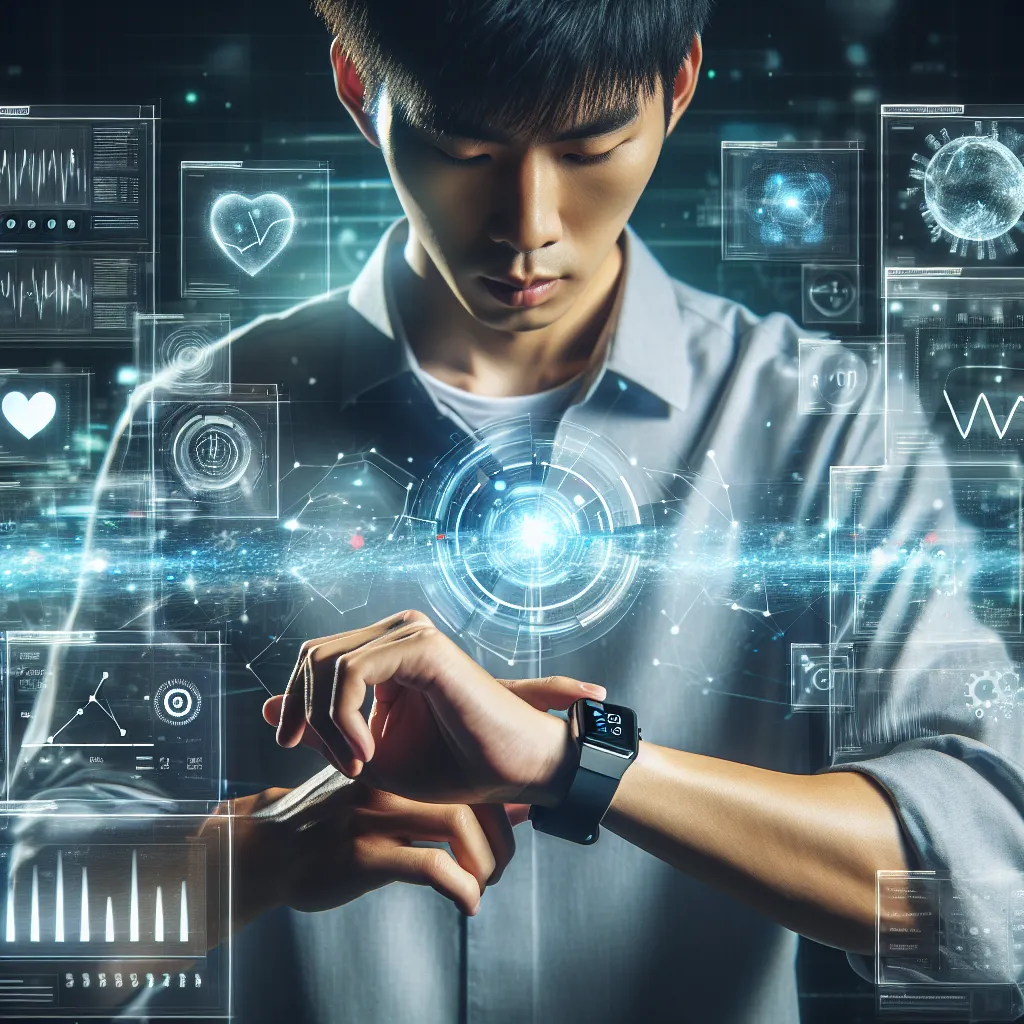As an experienced IELTS instructor, I’m excited to share with you a comprehensive IELTS Reading practice test focused on the topic of wearable technology in healthcare. This test will help you familiarize yourself with the format and challenge your reading comprehension skills. Let’s dive in!
Nội dung bài viết
- Introduction
- IELTS Reading Test: Wearable Technology in Healthcare
- Passage 1 – Easy Text
- The Rise of Wearable Technology in Healthcare
- Questions 1-5
- Questions 6-10
- Passage 2 – Medium Text
- The Impact of Wearable Technology on Healthcare Systems
- Questions 11-14
- Questions 15-20
- Passage 3 – Hard Text
- The Future of Wearable Technology in Healthcare: Opportunities and Ethical Considerations
- Questions 21-26
- Questions 27-32
- Questions 33-35
- Answer Key
- Passage 1
- Passage 2
- Passage 3
- Tips for IELTS Reading Success
Introduction
The integration of wearable technology in healthcare has revolutionized patient care and monitoring. This IELTS Reading practice test explores various aspects of this cutting-edge field, providing you with an opportunity to enhance your reading skills while learning about an important contemporary topic.
 Wearable technology in healthcare
Wearable technology in healthcare
IELTS Reading Test: Wearable Technology in Healthcare
Passage 1 – Easy Text
The Rise of Wearable Technology in Healthcare
Wearable technology has emerged as a game-changer in the healthcare industry, offering new ways to monitor and manage health. These devices, ranging from smartwatches to sophisticated biosensors, are transforming how we approach personal health and medical care. The global market for wearable medical devices is expanding rapidly, with projections suggesting it will reach $27.2 billion by 2023.
One of the most significant advantages of wearable technology is its ability to provide continuous health monitoring. Unlike traditional medical check-ups that offer only periodic snapshots of a person’s health, wearables can track vital signs and other health metrics around the clock. This constant stream of data allows for early detection of potential health issues and more personalized treatment plans.
Fitness trackers, arguably the most well-known type of wearable health technology, have evolved from simple step counters to sophisticated devices that monitor heart rate, sleep patterns, and even stress levels. These devices not only provide users with valuable insights into their physical activity but also motivate them to adopt healthier lifestyles.
More advanced wearables are now being used to manage chronic conditions. For instance, continuous glucose monitors have revolutionized diabetes management by providing real-time blood sugar readings, eliminating the need for frequent finger pricks. Similarly, wearable ECG monitors help patients with heart conditions by detecting irregular heartbeats and alerting both the user and their healthcare provider to potential problems.
The integration of wearable technology with smartphone apps and cloud-based platforms has further enhanced their utility. Users can now easily track their health data over time, share information with their doctors, and receive personalized health recommendations. This seamless flow of information is paving the way for more proactive and preventive healthcare approaches.
As wearable technology continues to advance, we can expect to see even more innovative applications in healthcare. From smart clothing that monitors respiratory rates to ingestible sensors that track medication adherence, the possibilities are vast. These developments promise to make healthcare more accessible, efficient, and tailored to individual needs.
Questions 1-5
Do the following statements agree with the information given in the passage?
Write
TRUE if the statement agrees with the information
FALSE if the statement contradicts the information
NOT GIVEN if there is no information on this
- Wearable technology is expected to have a market value of $27.2 billion by 2023.
- Traditional medical check-ups provide more comprehensive health data than wearable devices.
- Fitness trackers can now monitor stress levels in addition to physical activity.
- Continuous glucose monitors have completely replaced the need for blood tests in diabetes management.
- Wearable ECG monitors can predict heart attacks before they occur.
Questions 6-10
Complete the sentences below.
Choose NO MORE THAN THREE WORDS from the passage for each answer.
- Wearable technology offers __ health monitoring, unlike traditional check-ups.
- The constant stream of data from wearables allows for __ of potential health issues.
- Fitness trackers have evolved from simple __ to more complex devices.
- Wearable technology is integrated with __ and cloud-based platforms for enhanced utility.
- Future developments in wearable technology may include smart clothing that monitors __.
Passage 2 – Medium Text
The Impact of Wearable Technology on Healthcare Systems
The integration of wearable technology into healthcare systems is reshaping the landscape of medical practices and patient care. This technological revolution is not only empowering individuals to take greater control of their health but also providing healthcare professionals with unprecedented access to real-time patient data. The repercussions of this shift are far-reaching, affecting everything from clinical decision-making to healthcare resource allocation.
One of the most significant impacts of wearable technology is its potential to alleviate the burden on healthcare systems. By enabling continuous monitoring of patients’ vital signs and health metrics, wearables can reduce the need for frequent hospital visits and allow for early intervention in case of health anomalies. This proactive approach to healthcare can potentially prevent hospitalizations and reduce the strain on medical facilities, particularly in managing chronic conditions.
The aggregation of data from wearable devices is creating new opportunities for population health management. Healthcare providers and researchers can analyze large datasets to identify trends, predict outbreaks, and develop more effective public health strategies. This big data approach to healthcare has the potential to revolutionize epidemiology and improve overall public health outcomes.
However, the integration of wearable technology into healthcare systems is not without challenges. Data privacy and security concerns are at the forefront, as the sensitive health information collected by these devices must be protected from unauthorized access or breaches. Healthcare providers must also grapple with the influx of data, ensuring they have the necessary infrastructure and expertise to interpret and act upon the information effectively.
The regulatory landscape surrounding wearable healthcare technology is still evolving. As these devices become more sophisticated and play a larger role in clinical decision-making, regulatory bodies must strike a balance between ensuring patient safety and fostering innovation. This includes establishing standards for data accuracy, reliability, and interoperability across different platforms and devices.
Wearable technology is also driving changes in healthcare education and training. Medical professionals now need to be well-versed in interpreting data from various wearable devices and incorporating this information into their clinical practice. This shift is leading to the emergence of new specialties and the need for continuous professional development in the field of digital health.
The economic implications of wearable technology in healthcare are substantial. While the initial investment in these technologies may be significant, the potential for long-term cost savings through preventive care and more efficient resource allocation is considerable. Insurance companies are increasingly recognizing the value of wearable data, with some offering incentives to policyholders who use these devices to maintain healthy lifestyles.
As wearable technology continues to advance, its integration into healthcare systems will likely deepen. From AI-powered diagnostic tools to nanotechnology-based wearables, the future promises even more sophisticated solutions for monitoring and managing health. This ongoing evolution will continue to challenge and transform traditional healthcare models, ultimately leading to more personalized, efficient, and effective medical care.
Questions 11-14
Choose the correct letter, A, B, C, or D.
-
According to the passage, wearable technology in healthcare:
A) Increases the need for hospital visits
B) Reduces the strain on medical facilities
C) Replaces the need for healthcare professionals
D) Only benefits patients with chronic conditions -
The analysis of data from wearable devices:
A) Is primarily used for individual patient care
B) Has limited applications in public health
C) Can help predict disease outbreaks
D) Is restricted to epidemiological studies -
One of the challenges in integrating wearable technology into healthcare systems is:
A) The lack of patient interest
B) The high cost of the devices
C) Ensuring data privacy and security
D) The limited accuracy of the data collected -
The passage suggests that the regulatory landscape for wearable healthcare technology:
A) Is fully developed and implemented
B) Focuses solely on patient safety
C) Is still in the process of development
D) Hinders innovation in the field
Questions 15-20
Complete the summary below.
Choose NO MORE THAN TWO WORDS from the passage for each answer.
Wearable technology is transforming healthcare systems by providing continuous monitoring and enabling early intervention. This proactive approach can help prevent hospitalizations and reduce the 15)__ on medical facilities. The collection of data from these devices creates opportunities for 16)__, allowing healthcare providers to identify trends and improve public health strategies. However, there are challenges, including concerns about 17)__ and the need for healthcare providers to manage the 18)__ effectively. The 19)__ for wearable healthcare technology is still evolving, and there’s a need for balance between patient safety and innovation. The integration of wearable technology is also influencing healthcare education, with professionals needing to be skilled in interpreting data from these devices. While there may be significant initial costs, the long-term potential for 20)__ through preventive care and efficient resource allocation is considerable.
Passage 3 – Hard Text
The Future of Wearable Technology in Healthcare: Opportunities and Ethical Considerations
The rapid advancement of wearable technology in healthcare is poised to usher in a new era of personalized medicine and proactive health management. As these devices become increasingly sophisticated, integrating artificial intelligence, nanotechnology, and advanced biometric sensors, they promise to revolutionize not only how we monitor health but also how we diagnose, treat, and prevent diseases. However, this technological leap forward also brings with it a host of complex ethical and societal considerations that must be carefully navigated.
One of the most promising developments in wearable healthcare technology is the emergence of implantable and ingestible sensors. These microscopic devices can be placed inside the body to monitor a wide range of physiological parameters with unprecedented accuracy. For instance, ingestible sensors can track medication adherence and assess the efficacy of treatments in real-time, potentially transforming the management of chronic conditions and improving patient outcomes. Similarly, implantable devices could provide continuous monitoring of vital organs, detecting early signs of failure or disease progression long before symptoms manifest.
The integration of artificial intelligence with wearable technology opens up new frontiers in predictive healthcare. Machine learning algorithms can analyze the vast amounts of data generated by wearable devices to identify patterns and predict health events before they occur. This could range from forecasting the onset of a migraine to predicting a heart attack hours or even days in advance, allowing for timely intervention and potentially saving lives. Moreover, AI-powered wearables could offer personalized health recommendations, acting as virtual health coaches tailored to each individual’s unique physiological profile and lifestyle.
Nanotechnology is set to push the boundaries of what’s possible in wearable healthcare devices even further. Nanoscale sensors could be woven into fabrics, creating “smart textiles” capable of monitoring a wide array of health metrics. These could include clothing that adjusts its insulation based on body temperature, socks that monitor diabetic foot health, or even bandages that detect infections and release targeted antibiotics. The potential applications of nanotechnology in wearable healthcare are vast and could lead to a paradigm shift in how we approach personal health management.
However, as wearable technology becomes more invasive and data-intensive, it raises significant ethical concerns. The right to privacy is a primary consideration, as these devices collect and transmit highly sensitive personal health information. There’s a need for robust data protection measures and clear guidelines on who has access to this information and how it can be used. The potential for data breaches or misuse could have serious consequences, ranging from discrimination in employment or insurance to psychological distress from the constant monitoring of one’s health.
The accuracy and reliability of wearable healthcare devices is another critical issue. As these technologies play an increasingly important role in clinical decision-making, ensuring their precision and consistency becomes paramount. False positives or negatives could lead to unnecessary anxiety, medical procedures, or missed diagnoses. Regulatory bodies will need to develop stringent standards for the validation and certification of these devices, particularly as they become more complex and autonomous.
The integration of wearable technology into healthcare also raises questions about health equity and access. While these devices have the potential to democratize healthcare by providing continuous monitoring and early intervention capabilities, they may also exacerbate existing healthcare disparities. The cost of advanced wearable technology could put it out of reach for many, creating a two-tiered system where only those who can afford these devices benefit from their advanced capabilities.
Moreover, the reliance on wearable technology in healthcare could fundamentally alter the doctor-patient relationship. While these devices can provide valuable data and insights, there’s a risk of over-reliance on technology at the expense of human judgment and empathy. Maintaining a balance between technological capabilities and the human element of healthcare will be crucial in ensuring that these advancements enhance rather than diminish the quality of care.
The psychological impact of constant health monitoring is another aspect that warrants consideration. While wearable technology can empower individuals to take control of their health, it may also lead to increased anxiety and hypochondria in some users. The constant stream of health data could create a preoccupation with minor fluctuations in physiological parameters, potentially diminishing quality of life rather than enhancing it.
As we stand on the brink of this technological revolution in healthcare, it is imperative that we approach these advancements with both enthusiasm and caution. The potential benefits of wearable technology in improving health outcomes and quality of life are immense, but so too are the ethical challenges they present. Striking the right balance between innovation and responsibility will be key to harnessing the full potential of these technologies while safeguarding individual rights and societal values.
Questions 21-26
Complete the sentences below.
Choose NO MORE THAN TWO WORDS from the passage for each answer.
- Implantable and ingestible sensors can monitor physiological parameters with unprecedented __.
- AI-powered wearables could act as virtual __ tailored to each individual’s needs.
- Nanoscale sensors could be used to create __ capable of monitoring various health metrics.
- The integration of wearable technology into healthcare raises concerns about the right to __.
- Ensuring the __ of wearable healthcare devices is crucial as they play a larger role in clinical decisions.
- The reliance on wearable technology could alter the __ between doctors and patients.
Questions 27-32
Do the following statements agree with the claims of the writer in the passage?
Write
YES if the statement agrees with the claims of the writer
NO if the statement contradicts the claims of the writer
NOT GIVEN if it is impossible to say what the writer thinks about this
- Ingestible sensors can completely replace traditional methods of assessing treatment efficacy.
- Machine learning algorithms can predict all types of health events with 100% accuracy.
- Nanotechnology in wearable devices could lead to a significant change in personal health management approaches.
- The integration of wearable technology in healthcare may widen the gap in healthcare access between different socioeconomic groups.
- Over-reliance on wearable technology will inevitably lead to the replacement of human doctors.
- The constant monitoring of health data through wearables may have negative psychological effects on some users.
Questions 33-35
Choose the correct letter, A, B, C, or D.
-
According to the passage, one of the main ethical concerns regarding wearable healthcare technology is:
A) The high cost of the devices
B) The potential for data breaches and misuse
C) The complexity of the technology
D) The lack of regulatory oversight -
The passage suggests that the integration of AI with wearable technology could:
A) Completely eliminate the need for human doctors
B) Only benefit patients with chronic conditions
C) Provide personalized health recommendations
D) Increase healthcare costs significantly -
The author’s overall stance on the future of wearable technology in healthcare can be described as:
A) Overwhelmingly enthusiastic
B) Deeply skeptical
C) Cautiously optimistic
D) Entirely neutral
Answer Key
Passage 1
- TRUE
- FALSE
- TRUE
- FALSE
- NOT GIVEN
- continuous
- early detection
- step counters
- smartphone apps
- respiratory rates
Passage 2
- B
- C
- C
- C
- strain
- population health management
- data privacy
- influx of data
- regulatory landscape
- cost savings
Passage 3
- accuracy
- health coaches
- smart textiles
- privacy
- accuracy and reliability
- relationship
- NO
- NO
- YES
- YES
- NOT GIVEN
- YES
- B
- C
- C
Tips for IELTS Reading Success
-
Time management: Practice completing reading passages within the allocated time. Aim to spend about 20 minutes on each passage.
-
Skimming and scanning: Develop these skills to quickly identify key information in the text.
-
Understand question types: Familiarize yourself with various IELTS Reading question types and practice strategies for each.
-
Vocabulary building: Regularly learn new words and phrases, especially those related to common IELTS topics like technology and healthcare.
-
Practice active reading: Engage with the text by underlining key points and making mental summaries as you read.
-
Pay attention to details: Many questions test your ability to identify specific information, so read carefully.
-
Don’t leave blanks: Always provide an answer, even if you’re unsure, as there’s no penalty for incorrect answers.
-
Check your answers: If time allows, review your


